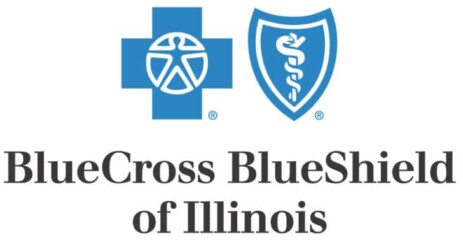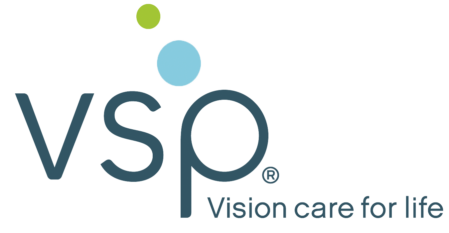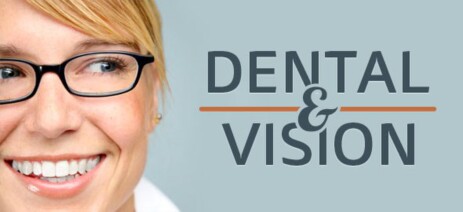
Group Health Insurance

- Renewal Date: January 1, 2025
- Open Enrollment: December 2024
Open Enrollment Information
Search online for participating medical providers
How do PPO Plans work?
If you like having the flexibility to choose the doctors, hospitals and other health care providers you use to get care, and you can afford to pay more, a PPO may be the right plan for you and your family.
PPO stands for Participating Provider Organization. It's a type of health plan that lets you choose where you go for care, without a referral from a primary care physician (PCP) or having to only use providers in your plan's provider network. It typically has higher monthly premiums and out-of-pocket costs like copays, coinsurance and deductibles.
A PPO may be a good choice for you because:
You don't need a PCP to coordinate your care.
You don't need a referral to see a specialist.
You can get care from in-network or out-of-network providers.
PPO stands for Participating Provider Organization. It's a type of health plan that lets you choose where you go for care, without a referral from a primary care physician (PCP) or having to only use providers in your plan's provider network. It typically has higher monthly premiums and out-of-pocket costs like copays, coinsurance and deductibles.
A PPO may be a good choice for you because:
You don't need a PCP to coordinate your care.
You don't need a referral to see a specialist.
You can get care from in-network or out-of-network providers.
How does Blue Options PPO plans work?
Blue Options from BlueCross and BlueShield of Illinois (BCBSIL) is designed for members who want all the benefits of a PPO and the flexibility to use a large network when the need arises — all at a price lower than their traditional PPO plan. Blue Options offers the same range of health care benefits and member services as the larger PPO network, but may save you money over other PPO health plans.
How Blue Options Works- To receive the highest level of benefits, you and your covered dependents should use the independently-contracted doctors and hospitals within the Blue Options PPO (BCO) network. You can receive care from a provider within the larger PPO network, but will pay higher out-of-pocket costs. You will pay the highest out-of-pocket cost by choosing an out-of-network provider and may have to pay those fees up front.
How Blue Options Works- To receive the highest level of benefits, you and your covered dependents should use the independently-contracted doctors and hospitals within the Blue Options PPO (BCO) network. You can receive care from a provider within the larger PPO network, but will pay higher out-of-pocket costs. You will pay the highest out-of-pocket cost by choosing an out-of-network provider and may have to pay those fees up front.
How do HSA-Compatible Plans work?
A Health Savings Account (HSA) gives you more control over your healthcare financing. Health Savings Accounts are combined with an HSA-compatible PPO health insurance plan to offer a more affordable approach to healthcare.
HSA-Compatible Health Insurance plans typically provide lower premiums and the HSA Savings account provides tax benefits when contributions are made. Money can be withdrawn Tax-Free from the Health Savings Account to pay for qualified expenses. If you do not need to withdraw the money from the Health Savings Account,it continues to grow on a Tax-Deferred basis.
Lower insurance premiums combined with using tax-free money can lead to significant savings.
HSA-Compatible Health Insurance plans typically provide lower premiums and the HSA Savings account provides tax benefits when contributions are made. Money can be withdrawn Tax-Free from the Health Savings Account to pay for qualified expenses. If you do not need to withdraw the money from the Health Savings Account,it continues to grow on a Tax-Deferred basis.
Lower insurance premiums combined with using tax-free money can lead to significant savings.
Deductibles, Coinsurance, Copayments & Out-of-Pocket limits
A DEDUCTIBLE is the amount you pay each calendar year for most eligible medical services or medications before your health plan begins to share in the cost of covered services. For example, if you have a $500 yearly deductible, you'll need to pay the first $500 of your total eligible medical costs before your plan starts paying claims..
COINSURANCE is a portion of the medical cost you pay after your deductible has been met. For example, if your coinsurance is 20%, you pay 20% of the cost of your covered medical bills. Your health insurance plan will pay the other 80 percent. If you meet your annual deductible in June, and need an MRI in July, it is covered by coinsurance. If the covered charges for an MRI are $2,000 and your coinsurance is 20%, you need to pay $400 ($2,000 x 20%). Your insurance company or health plan pays the other $1,600. The higher your coinsurance percentage, the higher your share of the cost is. You are also responsible for any charges that are not covered by the health plan, such as charges that exceed the plan’s Maximum Reimbursable Charge.
COPAYMENTS are a flat fee that you pay each time you go to your doctor or fill a prescription (or other types of medical care). For example, if you hurt your back and go see your doctor, or you need a refill of your child's asthma medicine, the amount you pay for that visit or medicine is your copay. Your copay amount is printed right on your health plan ID card. Copays cover your portion of the cost of a Doctor's visits, Outpatient Medications, & Emergency Room or Urgent Care visits.
The Annual OUT-OF-POCKET limit is the most you could pay for covered medical expenses in a calendar year. This amount includes money you spend on deductibles, copayments & coinsurance. Once you reach your annual out-of-pocket limit, your health plan will pay your covered medical and prescription costs for the rest of the calendar year.
COINSURANCE is a portion of the medical cost you pay after your deductible has been met. For example, if your coinsurance is 20%, you pay 20% of the cost of your covered medical bills. Your health insurance plan will pay the other 80 percent. If you meet your annual deductible in June, and need an MRI in July, it is covered by coinsurance. If the covered charges for an MRI are $2,000 and your coinsurance is 20%, you need to pay $400 ($2,000 x 20%). Your insurance company or health plan pays the other $1,600. The higher your coinsurance percentage, the higher your share of the cost is. You are also responsible for any charges that are not covered by the health plan, such as charges that exceed the plan’s Maximum Reimbursable Charge.
COPAYMENTS are a flat fee that you pay each time you go to your doctor or fill a prescription (or other types of medical care). For example, if you hurt your back and go see your doctor, or you need a refill of your child's asthma medicine, the amount you pay for that visit or medicine is your copay. Your copay amount is printed right on your health plan ID card. Copays cover your portion of the cost of a Doctor's visits, Outpatient Medications, & Emergency Room or Urgent Care visits.
The Annual OUT-OF-POCKET limit is the most you could pay for covered medical expenses in a calendar year. This amount includes money you spend on deductibles, copayments & coinsurance. Once you reach your annual out-of-pocket limit, your health plan will pay your covered medical and prescription costs for the rest of the calendar year.
Blue Choice Preferred PPO | Blue Options PPO | ||||||||||||
Medical Provider Network/s | Blue Choice Preferred PPO (BCE) | Blue Options (BCO) Tier 1- receives the richest benefits If it does not say Tier 1 benefits are paid as Tier-2 with a lesser level of benefits See how this plan works below | |||||||||||
Plan Summaries (SBCs) | |||||||||||||
Employee Premiums | |||||||||||||
When choosing the Blue Options PPO [BCO] plan, there are three benefit tier choices.
- In order for members living in Illinois to obtain the highest level of benefits (lowest out of pocket member expenses), using a Tier 1: Blue Options PPO [BCO] provider is suggested.
- Second option is the Tier 2: Participating Provider Organization [BCO] provider - member may experience higher out of pocket expenses and co-payments.
- Third Option is Tier 3: Out of Network - highest out of pocket member expenses.
Provider Locator Tips:
- Tier 1 Providers will be displayed first in the list of Providers when using the Tier sort option. Tier 2 Providers will display towards the end of the list. If choosing a different sort option, such as alphabetically or by distance, Provider Finder will default to Tier 1 Providers.
- Member should read the Note section of Provider Finder and select "All Tiers" from the drop down choices at the top of the page to search the entire network. This will expand the listing to show both Tier 1 and Tier 2 Providers. A Provider's tier level will display on the right hand side of the Provider listing. (NOTE from Broker- we have found that Tier-2 providers are NOT listed as "Tier 2" - but they do not say Tier 1. So if it does not list the provider as Tier 1- assume it is a Tier 2 provider)
- When a member communicates with their selected provider - it may help to share the associated alpha pre-fix "XOX", to assist them in confirming they are in the network, as this is the code used when they submit a claim
- Many members like this plan as the Deductible and Out of Pocket cross accumulate (cross feed) which means deductible or out of pocket expenses met when using a Tier 1 provider feeds into the Tier 2 deductible and out-of-pocket expense bucket and vice versa. As a reminder, Tier 3 is a separate bucket (does not feed into Tier 1 or 2).
Traveling or Residing out of state (Blue Choice Preferred PPO or Blue Options PPO)
- Member traveling or residing out of state would use a PPO (National Network) provider under the Blue Card program, as a member traveling or living out of state does not have the option to use a Tier 1 (BCO) or Blue Choice Preferred (BCE) local provider. Benefits will be paid at the Tier 1 level (or IN NETWORK level) as long as they use providers that are contracted under the PPO (Larger Broad) network and the service is a covered benefit of their policy. All levels of care - Non Emergent, Emergency and Urgent.
- Members traveling or residing outside of Illinois may access Blue Card Providers by calling (800) 810-BLUE (2583) or at www.bcbsil.com under the provider finder by selecting the state and then choosing Participating Provider Organization [PPO] as the network choice. Keep in mind that Providers in states that border Illinois may bill the IL plan instead of the host state, resulting in the claim being paid at the Tier 2 benefit level (for Blue Options) or Out of Network benefit level (if not contracted with the Blue Choice Preferred network).
Life & Voluntary Life Insurance / Dental & Vision Insurance




- Anniversary Date: March 1, 2025
- Open Enrollment: February 2025
Included Insurance Benefits
- Employee Term Life and AD&D insurance
- Voluntary Life and AD&D for Employees, Spouses & Children
- Dental PPO Insurance
- Vision Insurance
NOTE: Dental & Vision Insurance plans are LINKED as a single package
Open Enrollment Presentation Videos
Benefit Information
Insurance Premiums & Forms
- Bi-Weekly Insurance Premiums
- Voluntary Life Insurance Premiums
- Enrollment form
- Life Insurance Beneficiary Form
Certificates of Coverage (all the fine print)
Special Notes about Voluntary Life Insurance Underwriting
- During the Annual Open Enrollment period for Voluntary Life Insurance coverage, employees are allowed increase coverage up to one increment level ($25K) increase without a Statement of Health form for employee and $5k for spouse, even if this pushes the member over the Guarantee Issue Limit for the first time. Anyone applying for Voluntary Life Insurance coverage above these limits must complete a Statement of Health form, which is subject to underwriting review/approval.
Special Notes for Dental Insurance Participants
- Principal Financial's dental PPO plan includes the "Maximum Accumulation" feature. This feature allows for a portion of unused maximum benefit to carry over to next year's maximum benefit amount. To qualify, you must have had a dental service performed within the Calendar year and used less than the maximum threshold. The threshold is equal to the lesser of 50% of the maximum benefit or $1,000. If qualification is met, 50% of the threshold is carried over to next year's maximum benefit. You can accumulate no more than four times the carry over amount. The entire accumulation amount will be forfeited if no dental service is submitted within a calendar year.
- Dental Insurance plan benefits are based on a CALENDAR YEAR basis (Jan 1st to Dec 31st of each year)
Search online for participating providers
- Dental Participating Providers
- Vision Participation Providers (Select the "VSP CHOICE NETWORK")
Total Pet Plan from Pet Benefit Solutions

Total Pet Plan from Pet Benefit Solutions saves you money on everything your pet needs. There are no exclusions – even pets with pre-existing conditions are covered. Best of all, it's less than 40 cents a day!
Total Pet Plan includes:
- Up to 40% off and free shipping on prescriptions, preventatives, food, treats, toys, and more
- Same-day pickup for human-grade Rx from participating pharmacies
- Instant 25% savings on in-house medical services at participating veterinarians
- 24/7 pet telehealth with US-based licensed veterinarians
- A durable ID tag and lost pet recovery service
Very Low Monthly Costs
- $11.75/month for one pet
- $18.50/month for a family plan
See more details & enroll now

